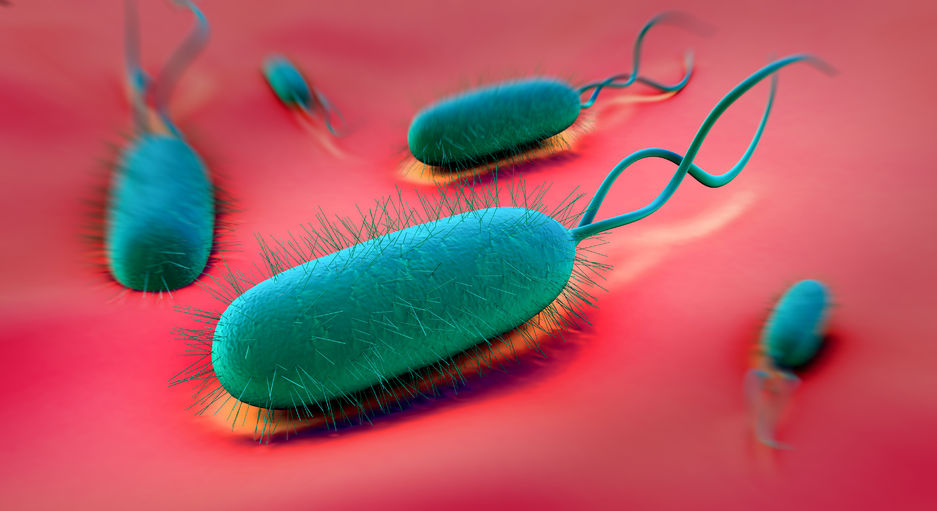A spiral-shaped bacterium in the human stomach was first described over 100 years ago by Prof. W. Jaworski in Poland. It wasn't taken seriously as a pathogenic agent until 1984, when two Australian researchers, Barry Marshall and J. Robin Warren, identified it from intestinal biopsies from peptic ulcer disease patients.1 They noted its pleomorphic aspects, which differed from patient to patient, and its ability to tolerate stomach acid by secreting urease and burying into the gastric and duodenal mucosa. They received the Nobel Prize in Physiology or Medicine in 2005.
Their work changed the treatment parameters from antacid therapy, which frequently caused relapse of the disease, to antibiotic therapy, which addressed the underlying cause of the illness. To this day, the standard allopathic treatment is the triple therapy of a proton pump inhibitor, frequently omeprazole 40 mg per day, with clarithromycin 500 mg twice per day and amoxicillin 1 g twice per day for 7 to 14 days. Diagnosis is made by carbon urea breath testing, stool antigen testing, blood antibody testing, and biopsy during endoscopic examination with a rapid urease test, histological examination, and microbial culture.
H. pylori is a widely prevalent microbe with nearly 50% of the Western world and over 80% of those living in developing countries infected. Only 15% to 20% of infected people have symptoms of peptic ulcer disease. Its prevalence is associated with socioeconomic status, water contamination, sharing of eating utensils, and food quality. The bacteria has an amazing ability to persist in infected individuals for decades and have coexisted with humans since they migrated out of Africa 60,000 years ago.2
Autoimmune Disease Associated with H. Pylori
H. pylori infection has been implicated in a variety of diseases not related to the GI tract. Skin disease association includes the following3,4:
- Rosacea: H. pylori can increase the level of nitrous oxide in the blood or tissue contributing to the flushing and erythema of rosacea.
- Chronic urticaria: Several studies have found a link between H. pylori and chronic urticaria. It is thought that the infection increases the permeability of the intestinal lining and exposure to allergens and also produces antibodies that may increase the release of histamine in the skin.
- Psoriasis: H. pylori may be one of the organisms capable of triggering the inflammatory response in psoriasis.
- Sjögren's syndrome: H. pylori may induce an autoimmune reaction to the skin and glands, causing Sjögren's syndrome.
- Henoch-Schonlein purpura
- Alopecia areata
- Sweet disease
- Systemic sclerosis
- Atopic dermatitis
- Behçet's disease
- Generalized pruritus
- Nodular prurigo
- Immune thrombocytopenic purpura
- Lichen planus
- Aphthous ulceration
H. Pylori, Cognition, and Neurological Syndromes
Not only do H. pylori work on disrupting autoimmune regulation via cytokines, interleukins, humoral, and cell mediated reactions, they also play a powerful role in the modulation of hormones, neurotransmitters, demyelination, and blood - brain barrier disruption.6 This infection has been well documented to be associated with depression, schizophrenia, epilepsy, multiple sclerosis, cognitive decline, other neurological diseases, gastrointestinal motility disorders, lymphoma, and vitamin and nutrient malabsorption.
Integrative Approaches to H. Pylori Treatment
My first interest in H. pylori aside from GI issues was rosacea. With our advantage of rapid diagnosis via EAV (electroacupuncture according to Voll) and the BioMeridian computer, it made assessment and treatment response immediately available. My favorite treatment has been with Pyloricil (Orthomolecular Products) containing mastic gum (guar gum) extract 250 mg, berberine sulfate hydrate 150 mg, bismuth citrate 125 mg, and zinc carnosine 37.5 mg per capsule. Dose is 1 capsule twice per day. If it did not test well or if the H. pylori seemed to no longer be responsive, I use mastic gum/DGL from Complementary Prescriptions with deglycyrrhizinated licorice (Glycyrrhiza glabra root and rhizome extract 300 mg) with gum mastic (Pistacia lentiscus resin extract). Chew 1 to 2 wafers as needed. I usually suggest twice per day and typically see resolution or good improvement in about 1 month. There are many other herbal and alternative treatments for H. pylori from around the world.7
The depth of research in this infection is truly overwhelming, and I hope that the reader will have a higher index of suspicion in seeking and treating this universal hidden plague.
Notes
1. Marshall BJ, Warren JR. Unidentified curved bacilli in the stomach of patients with gastritis and peptic ulceration. Lancet. 1984;1:1311 - 1315.
2. Linz B et al. An African origin for the intimate association between humans and Helicobacter pylori. Nature. 2007:445:915 - 918.
3. Chey WD, Wong BC. American College of Gastroenterology guideline on the management of Helicobacter pylori infection. Am J Gastroenterol. 2007;102:1808 - 1825.
4. Hernando-Harder AC et al. Helicobacter pylori infection and dermatologic disease. Eur J Dermatol. 2009.
5. Papamichael KX, Papaioannou G, Karga H, Roussos A, Mantzaris GJ. Helicobacter pylori infection and endocrine disorders: Is there a link? World J Gastroenterol. 2009 Jun 14;15(22):2701 - 2707. Epub 2009 Jun 14. doi:10.3748/wjg.15.2701.
6. Budzyński J, Kłopocka M. Brain-gut axis in the pathogenesis of Helicobacter pylori infection. World J Gastroenterol. 2014 May 14;20(18):5212 - 5225. Epub 2014 May14. doi:10.3748/wjg.v20.i18.5212
7. Ayala G, Escobedo-Hinojosa WI, de la Cruz-Herrera CF, Romero I. Exploring alternative treatments for Helicobacter pylori infection World J Gastroenterol. 2014 Feb 14; 20(6): 1450 - 1469. Epub 2014 Feb 14. doi:10.3748/wjg.v20.i6.1450.




Kills those buggers in about 10 days.